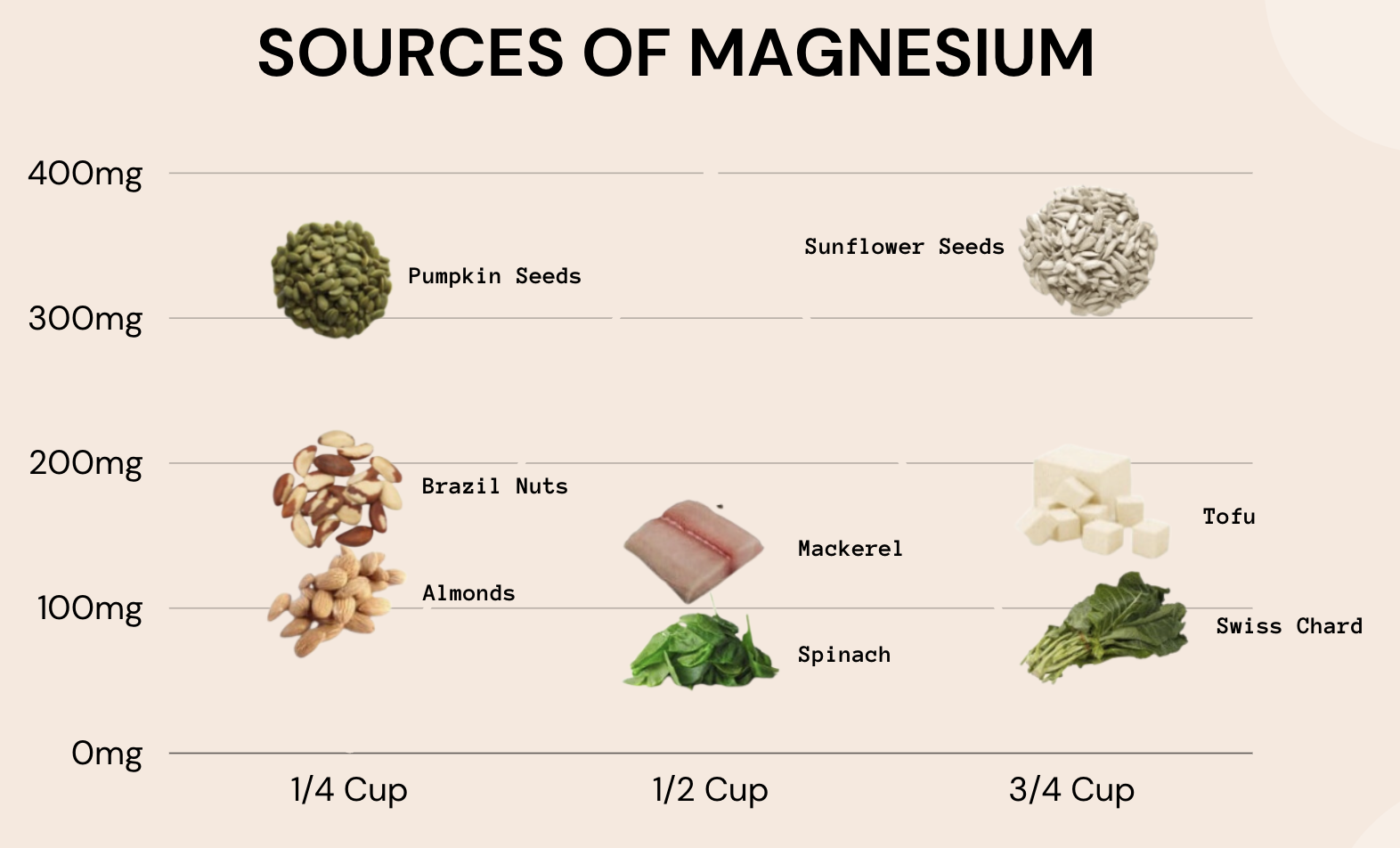September 6, 2023 by Fuel & Fortify
For Everyday Health and Performance, Why Magnesium Matters So Much

Faheemuddin Ahmed called magnesium the “forgotten electrolyte” in a 2019 study. It’s one of several we spot when we glance at the side of our Gatorade bottles, but do we still undervalue its importance? Without a doubt, it plays a crucial role in an athlete’s recovery, energy metabolism, and overall performance.
Here are the top reasons why it’s essential to maintain optimal magnesium levels.
1. Improved Protein Synthesis
Maintaining adequate magnesium levels during the recovery process is crucial given how positively it influences cellular metabolism and protein synthesis. One study investigated the impact of dietary magnesium supplementation on strength development in 26 untrained subjects during a 7-week strength training program. The group that received magnesium supplementation—bringing their intake, including diet, to 8 mg/kg body weight/day (i.e. 560mg for someone weighing 70kg)—showed significant increases in absolute strength (+21%) and relative strength adjusted for body weight (+19%), when compared to the control group.
2. Boosting Energy Metabolism (ATP Production)
ATP, which is the primary energy currency of cells, is produced through a process known as cellular respiration, which takes place inside the mitochondria of a cell. Mitochondria are tiny structures within cells that have a special job—they extract energy from the food we eat and transform it into ATP.
In the case of aerobic (presence of oxygen) cellular respiration, there are three main steps in the conversion of glucose into ATP:
- Glycolysis—Glucose is broken down into smaller molecules, producing a small amount of ATP and pyruvate.
- The Krebs Cycle (also known as TCA cycle)—Pyruvate from glycolysis is further broken down to release energy and carbon dioxide while generating more ATP.
- Electron Transport Chain—Taking place on the inner mitochondrial membrane. It’s where electrons from previous steps are used to generate a significant amount of ATP by creating a flow of protons (H⁺ ions) and water as a byproduct.
Magnesium plays a crucial role in ATP production. Mg2+ (ionized form of magnesium) acts as a cofactor in all reactions involving the utilisation and transfer of ATP.
3. Likelihood of Insufficient Daily Intake
It’s a startling reality that magnesium deficiency is more widespread than most people realise. In many developed countries like Australia, up to one in three are not hitting their recommended daily intake*. Symptoms of magnesium deficiency can be subtle, ranging from muscle cramps to persistent fatigue. To ensure you’re not unknowingly affected, it’s advisable to consult with a healthcare professional or nutritionist who can evaluate your magnesium levels (via a blood test) and provide guidance on supplementation.
*Men under 30 need 400 milligrams (mg) of magnesium per day and men over 31 need 420mg a day. Women under 30 need 310mg each day and 320mg a day after 31
These represent Australian Guidelines and may differ from your country’s national recommendations.
4. Preventing Lactate Accumulation
Chen et al. administered 90mg/kg of magnesium sulfate and found that “maximal muscle lactate accumulation was significantly delayed” when measurements were taken on a treadmill test involving rats.
Another study that may not specifically cater to elite performers, yet undeniably presents an intriguing discovery—involved fifty-eight patients (human this time) diagnosed with severe sepsis were divided into two groups: one receiving an intravenous magnesium sulfate solution and the other a placebo. The results strongly favoured the magnesium group, demonstrating their ability to clear more lactate. Although there was no significant difference in sepsis-related mortality between the two groups, the magnesium-treated patients experienced a significantly shorter median length of ICU stay compared to those in the placebo group, with 8 days versus 15 days, respectively.
5. Magnesium Depletion in Hot and Humid Conditions
Prolonged and intense exercise, especially in hot conditions, can lead to significant reductions in plasma magnesium concentrations due to magnesium loss through sweat. These reductions, which can amount to approximately 10 percent, can certainly hinder performance. Muscle cramps are definitely most unwelcome at the best of times, let alone in a half marathon. This study proved that a magnesium-rich electrolyte drink “was highly effective in reducing mild to severe exercise associated muscle cramps in half-marathon runners.”
Best Sources of Magnesium
While magnesium supplements are available, it’s always best to obtain nutrients from whole foods whenever possible. Here are some magnesium-rich foods that should be part of anyone’s diet.

- Leafy Greens—Spinach, kale, and Swiss chard
- Nuts and Seeds—Almonds, cashews, and pumpkin seeds
- Whole Grains—Foods like brown rice, quinoa, and whole wheat bread
- Legumes—Beans, lentils, and chickpeas
- Fish—Fatty fish like salmon and mackerel (also rich in omega-3s)
- Bananas—This fruit is not only a great source of potassium but also contains magnesium
Types of Magnesium and Where They Shine
Now if you are opting to top up through magnesium supplements—which form of magnesium is preferred?
There are numerous forms out there, but if we had to settle on a TOP 3, these would be it…
- Citrate—Most bioavailable form of magnesium, meaning it’s more easily absorbed
- Glycinate—The “organic chill pill”—a proven effective treatment for anxiety, sleep disorders and depression
- Malate—Considered to be gentler on the tummy and have less of a laxative effect
Again, this represents a subset of the forms of magnesium available. Check out Healthline’s article on a further seven forms of magnesium and their benefits.
We sure hope we’ve given you enough reason to check in with your magnesium intake—it’s a nutritional powerhouse too important to ignore!